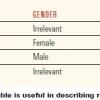 |
Action Figures Models can be invaluable testing tools. Unfortunately, they are often difficult to automate. One solution is to have testers use action words, or action-based testing, to express models. This enables them to design action-based models that can be easily automated by a programming expert. Let Hans Buwalda teach you how to employ action words to help you get the job done.
|
|
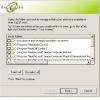 |
Usability and Privacy While most bugs that make headline news are due to careless software implementations exploited by skilled hackers, the problems in KaZaA center around its user interface. This article details KaZaA's application flaws and then suggests ways to prevent such flaws.
|
|
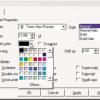 |
Deconstructing GUI Test Automation Window mapping gives elements specific names so tests are easier to update and understand. Task libraries group sequences of steps that make up part of user tasks when those sequences show up in multiple tests. Data-driven test automation separates the parameters of a test case from the test script so that the test script can be reused for many related tasks. Keyword-driven test automation formats tests as tables or spreadsheets and creates parsers to read and execute the test descriptions. Take advantage of these four techniques to help you test a graphical user interface, and see how developers can make your life easier.
|
|
|
|
A World-Class Infrastructure for Performance Testing The IBM Global Testing Organization's performance test infrastructure is solely responsible for certifying the performance of all IBM enterprise Lotus Notes and Web applications before their deployment to end users. Naomi Mitsumori describes this infrastructure and provides insights into designing the appropriate test environment, how performance and monitoring tools should be selected, and the management style necessary for success. She explains the processes IBM uses for performance testing, including planning, daily workflow activities, entrance and exit criteria, and modeling of workload profiles.
|
Naomi Mitsumori, IBM Global Services
|
|
|
Improvement is a Journey: A Software Test Improvement Roadmap With the wide array of software testing practices out there, how do you know where to start? Karen Rosengren shows you how a group of IBM testers developed a road map for implementing practices that takes into consideration things such as the skills required to implement them and how the practices relate to one another. She also explains IBM's Software Testing Improvement Road Map (STIR) which defines the levels of testing practices from "basic" to "engineered."
|
Karen Rosengren, IBM
|
|
|
Feature Risk Analysis: What Do I Test First? Feature risk analysis is a quick, valuable method designed to determine which features need the most testing, and which need the least. Steve Tolman shows you how to gain a basic, yet very usable, understanding of how to prioritize the testing of features in any given test cycle. Intended for off-the-shelf software, this method delivers a definable and variable starting and ending point for testing.
|
Steve Tolman, PowerQuest Corporation Inc
|
|
|
A Custom Automation Framework and Test Case Management Solution Interested in seeing a real test automation solution in action? Automated testing is an exciting thing to be part of, but automating the automation is even better. This session presents a system where the test case/automation system is set in motion after configuration management builds a piece of software for a project in which test has been automated. This means thousands of preprogrammed test cases can be run on multiple machines day and night. Darin Magoffin shows you a demonstration of the process, then explains its challenges as well as its flexibility.
|
Darin Magoffin, Todd Hovorka, and Rich Wolkins, PowerQuest Corporation Inc
|
|
|
How to Avoid Adaptive Testing Syndrome Adaptive Testing Syndrome happens when, for various reasons, test team members become blind to the idiosyncrasies of the software and even accept them as a normal part of the design. However, when a different tester, or maybe just a different set of tests, comes in contact with the software, the bugs become painfully obvious. Here's how to diagnose and avoid ATS.
|
|
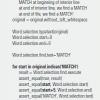 |
Bypassing the GUI Graphical User Interfaces make test automation hard. The problems are well known. You need specialized tools to drive the GUI. Those tools can be confused by the common programming practice of inventing custom user interface controls. When they are used in the simplest way, the tools lead to fragile tests that tend to break en masse when the GUI changes. Making the test resistant to change requires elaborate and sometimes awkward testing frameworks. Learn how to use a scripting interface to get around the GUI problem.
|
|
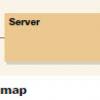 |
A Picture's Worth a Thousand Words Maps are a universal way of describing an area. You use them to plan your route and find your destination. Just as it's a good idea to have a map when traveling, it's a good idea to have a picture of the software you're testing. Elisabeth Hendrickson describes UML, parts maps, flow charts, state diagrams, and more.
|
|
